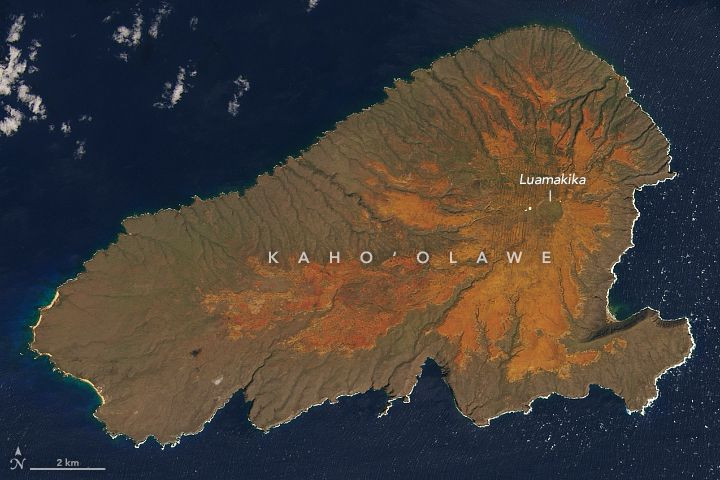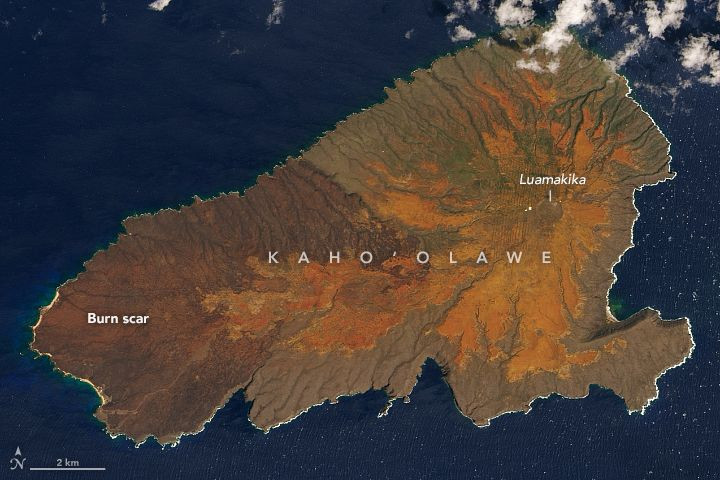NASA Satellite Image Shows Wildfire Burn Scars On Hawaiian Island
KEY POINTS
- Kaho'olawe island suffered a wildfire that burned uncontrollably for over a week
- Firefighters could not stop the fire because of possible unexploded bombs on the island
- A NASA satellite image shows the fire scars that the island incurred from the wildfire
Earlier this year, Hawaii's Kaho'olawe suffered a wildfire that burned about a third of the island. In a recent image taken by NASA and United States Geological Survey's Landsat 8 satellite, the burn scars can be seen on the already healing island.
In an earlier natural-color image of Kaho'olawe that was taken last Feb. 20, 2020, the island can be seen relatively normal but, two days later, the wildfire broke out and blazed for more than a week. Firefighters were unable to quickly respond to the fire whether on the ground or from the air because of the possible presence of unexploded ordnance on the island. These are explosive weapons that did not explode when they were deployed. Because of this potential danger, the fire continued to blaze uncontrollably until the rain finally thwarted the spread of the fire.
On March 7, after the fires had been put out, Landsat 8 took another image of the island, this time showing the burn scars that resulted from the wildfires. In the image, the burn scars can be seen in dark red along the western end, while the rest of the island has an orange-red tone as a result of erosion and dry weather.


Among the eight main islands of Hawaii, Kaho'olawe is the smallest one and is quite dry for an island in the tropics. In fact, it receives less than 26 inches of rain each year compared, for example, to Hilo City in The Big Island, which receives more than 130 inches of rain per year. Hilo City is considered as the wettest city in the United States.
The recent wildfire is just the latest in the string of trials for Kaho'olawe island. In the past, the island has suffered volcanic eruptions, bomb explosions and, even being used as a penal colony. It all started in the late 1700s when the goats that were introduced to Kaho'olawe ate up much of the landscape. The Kingdom of Hawaii then used the island as a penal colony in the mid-19th century then, in 1941, it was taken over by the U.S. Navy to be used for military training and bombing practice, lasting for 50 years.
Today, even though the island has been cleared of over 9 million pounds of unexploded ordnance and military debris, a significant part of the island remains uncleared. As mentioned earlier, this caused problems for firefighters during the recent wildfires because the potential danger prevented them from stopping the spread of the fire.
That said, some Hawaiians believe that the wildfire may actually have been beneficial in the quest to preserve the island because some unexploded ordnance were uncovered and the fires burned much of the invasive vegetation. The hope now is to replant the island with native species and establish a seabird colony.
© Copyright IBTimes 2024. All rights reserved.






















